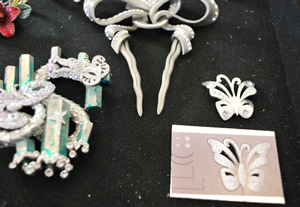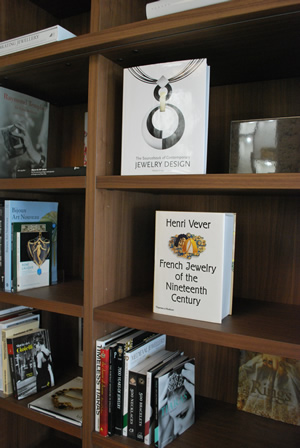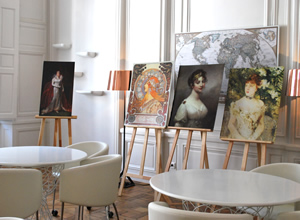Two years have already passed since L’École Van Cleef & Arpels opened its doors. Being the first introductory school to the jewelry and watch-making industry, L’École, carried by the name of a top House, is worth visiting. Marie Vallanet-Delhom, the President, opened its doors to Rubel & Ménasché. A guided tour to discover the hidden jewels of this extraordinary showcase…
We gently tiptoe into this place, slightly in awe of its résumé. L’École Van Cleef & Arpels is based in the Hôtel de Ségur, named after its former owner, the Marquis de Ségur, who had been nicknamed Prince of Vines (the love of the renowned vineyards of Bordeaux…) by Louis XV. Today, this 18th century town house, christened Hôtel Van Cleef & Arpels des Métiers by the Maison, is a place devoted to expertise, know-how and passing on.
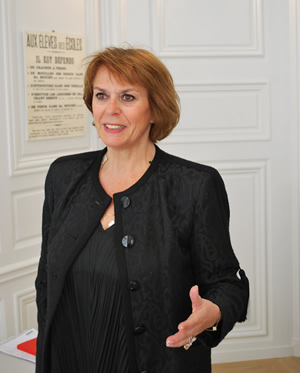 Barely have we entered our names in the register that we are caught in the energy and enthusiasm of the school’s President, Marie Vallanet-Delhom, who undertakes to introduce us to the school. “I have been working on this project for three years now. It was an informal discussion with the chairmanship of Van Cleef & Arpels that fostered the desire. We wanted to share this wonderful trade that is ours. The idea of opening up a school came about like an intuition. Three weeks later, the Richemont Group granted us complete freedom of action to launch it.”
Barely have we entered our names in the register that we are caught in the energy and enthusiasm of the school’s President, Marie Vallanet-Delhom, who undertakes to introduce us to the school. “I have been working on this project for three years now. It was an informal discussion with the chairmanship of Van Cleef & Arpels that fostered the desire. We wanted to share this wonderful trade that is ours. The idea of opening up a school came about like an intuition. Three weeks later, the Richemont Group granted us complete freedom of action to launch it.”
What should be the basis for an introductory school to the jewelry and watch-making industry? How to elaborate a comprehensive course, which everyone can have access to? “When I wanted to get information on what was done elsewhere in the world, I realized that there was no other school focused on this topic!” adds Marie Vallanet-Delhom. “Maybe the reason is that our trade maintains a cult of silence? And that everyone wants to preserve their trade secrets, even though, in the end, it is the jeweler’s talent that makes all the difference? Let’s assume that I explain to you how we make our famous Serti Mystérieux™. That does not mean that you will be able to do it!”
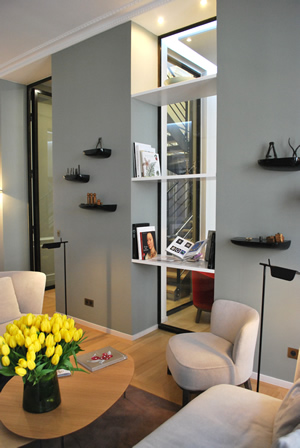
The decision was made to “broaden knowledge of the jewelry world”, as can be seen in the school’s logo which portrays the knowledge fairy taking flight. “Our objective was to create a training “cocoon” for the 12 students accepted into each training session, and make them feel completely at ease.” It is indeed true that the school is first of all a showcase where everything is about the pleasure of initiating oneself and discovering the jewelry and watch-making industry. Sixteen courses are offered, in French and in English, as the Maison’s mission towards apprenticeship and knowledge sharing is international. Translators work together with the teaching staff, and half the students come from abroad. “It is important to create a real encounter, a community. I take the time to introduce the teachers to the students before each session”, added the President, who was herself a teacher some years back.
The curriculum takes shape naturally and gradually. Marie Vallanet-Delhom also relies on her 25 years of experience in the jewelry industry, and on what she “wishes to explain and to pass on”… Sometimes, the students are the ones behind a course, such as the one on “Talisman Jewels”, which takes you throughout the world and the symbolic meaning of stones and jewels. The 23 instructors, some of whom are craftsmen of the Maison, are recruited according to three criteria: expertise in their subject, enthusiasm, and lastly, excellent teaching skills. 3 main topics are established: Art History, the world of stones, and expertise.
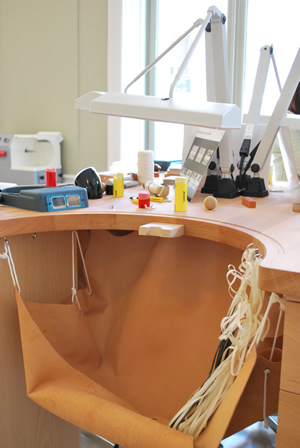 The school invests in quality equipment, suitable tools and stones. In gemology for example, under the aegis of the geologist/gemologist Dominique Dufermont, the objective is to learn to interpret stones and recognize them. “Our goal, with these two classes, is to go back to the ABC of the mineral and make the students understand the extraordinary aspect of the formation of a stone. We hand them rough stones. Moreover, for each course, the approach is experimental; we have worked on intellectuals paths and technical means to make knowledge accessible.” Thus, the students handle 4 stones of similar color and size, one precious one, two fine ones, and a fake one. Gradually, they are able to pinpoint “the” precious stone amid the “illusions”…
The school invests in quality equipment, suitable tools and stones. In gemology for example, under the aegis of the geologist/gemologist Dominique Dufermont, the objective is to learn to interpret stones and recognize them. “Our goal, with these two classes, is to go back to the ABC of the mineral and make the students understand the extraordinary aspect of the formation of a stone. We hand them rough stones. Moreover, for each course, the approach is experimental; we have worked on intellectuals paths and technical means to make knowledge accessible.” Thus, the students handle 4 stones of similar color and size, one precious one, two fine ones, and a fake one. Gradually, they are able to pinpoint “the” precious stone amid the “illusions”…
As for the watch-making courses, they thrust the students into the core of the mechanical movement. The classroom is in line with this male-dominated subject. In fact, each space is thought out so as to be in harmony with the subject of the classes it hosts and to contribute towards broadening the students’ outlook. In the stairway, plaster casts – which sort of serve as physical archives of the jewels – tell one facet of the trade. Further on, in the jewelry workshop, antique tools. We discover that each craftsman has his own tools, and that “their” pegs are polished by their unique skill. “It is amusing to watch the students practice and rub shoulders with the hardness of metal. Or learn to touch up an opal with gouache, to make a model out of pewter and paste – a Van Cleef & Arpels specificity. The courses are extremely rewarding for them, but also for our craftsmen: their expertise shines forth. In the field of jewelry, you must always remember that every craftsman plays a crucial part: the polisher and the setter are as important as the designer. Here, students value unique skill and collective work.”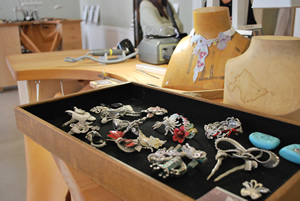
But there is no way we are forgetting emotion! The stones “inspire” different emotions to each and every one and the school’s President reminds us that “value is only a consequence of beauty.”
The tour ends in the library, open to all, and which welcomes the students after their classes or when they suddenly feel the need to supplement their knowledge. It is designed to gather all the books necessary to the general culture of jewelry lovers. Books on the great names of the jewelry world are side by side with others on the history of time; Jean-Baptiste Tavernier, who is said to have been the first big diamond trader (17th century), rubs shoulders with Henri Vever, the bible of French jewelry.
After two hours of exploration – and, already, of initiation – into the world of jewelry and watch-making, the only thing you want is: to go back to school! “Of course it is worth investing in education”, concludes Marie Vallanet-Delhom. “I would like to go even further and put forward a charity action: to go and meet French teenagers in order to introduce them to our trades, which are totally fulfilling, lucrative and where there is work to be found. I hope that L’École Van Cleef & Arpels will inspire them to choose this industry…”
Diamonds: the superstar stone
In 2014, L’École Van Cleef & Arpels launched two new courses, revolving around diamonds. The only stone to have a course dedicated to it, it is its exceptional character that prompted the teaching staff to extol it via: “Fascinating Diamond! First step: the Pursuit” and “Fascinating Diamond! Second step: the Quest”. From mines to mythical diamonds, via crystallization and covalent bonds, “the stone of stones”, so special and so unique, is revealed to aficionados.
| Location
www.lecolevancleefarpels.com Practical information L’École Van Cleef & Arpels is open to the public. The training sessions take place twice a month, over a period of fifteen days. Each student can choose their 4h-modules à la carte. The courses cost between 300 and 600 euros. Each one is overseen by two instructors. The school has the status of approved training organization and therefore falls within the framework of a DIF (Individual right to training), in France. Please note: sessions are planned for business groups within the framework of their HR practices. |
